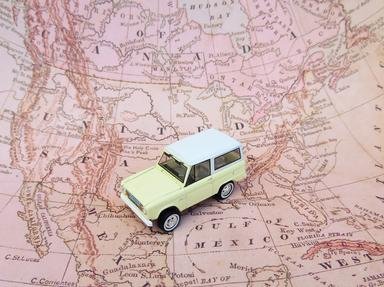Quiz Answer Key and Fun Facts
1. Who was the first sitting president to visit New Mexico?
2. What annual New Mexico event began in 1980?
3. Which of the following is NOT the name of an active New Mexico Pueblo?
4. Turquoise is a hydrous phosphate of what two metals?
5. Which of the following is NOT a National Forest or National Grassland in New Mexico?
6. Originally, the Territory of New Mexico covered all or parts of the following states EXCEPT which of these?
7. Which New Mexico congressman later became the Secretary of the Interior and was embroiled in a political scandal that ultimately cost him the job?
8. Which of the following cities was New Mexico's earliest capitol?
9. In 2007, there were more head of cattle in New Mexico than there were people.
10. In terms of yearly production value, which substance mined in New Mexico has ranked first?
Source: Author
olsongt
This quiz was reviewed by FunTrivia editor
Nannanut before going online.
Any errors found in FunTrivia content are routinely corrected through our feedback system.

